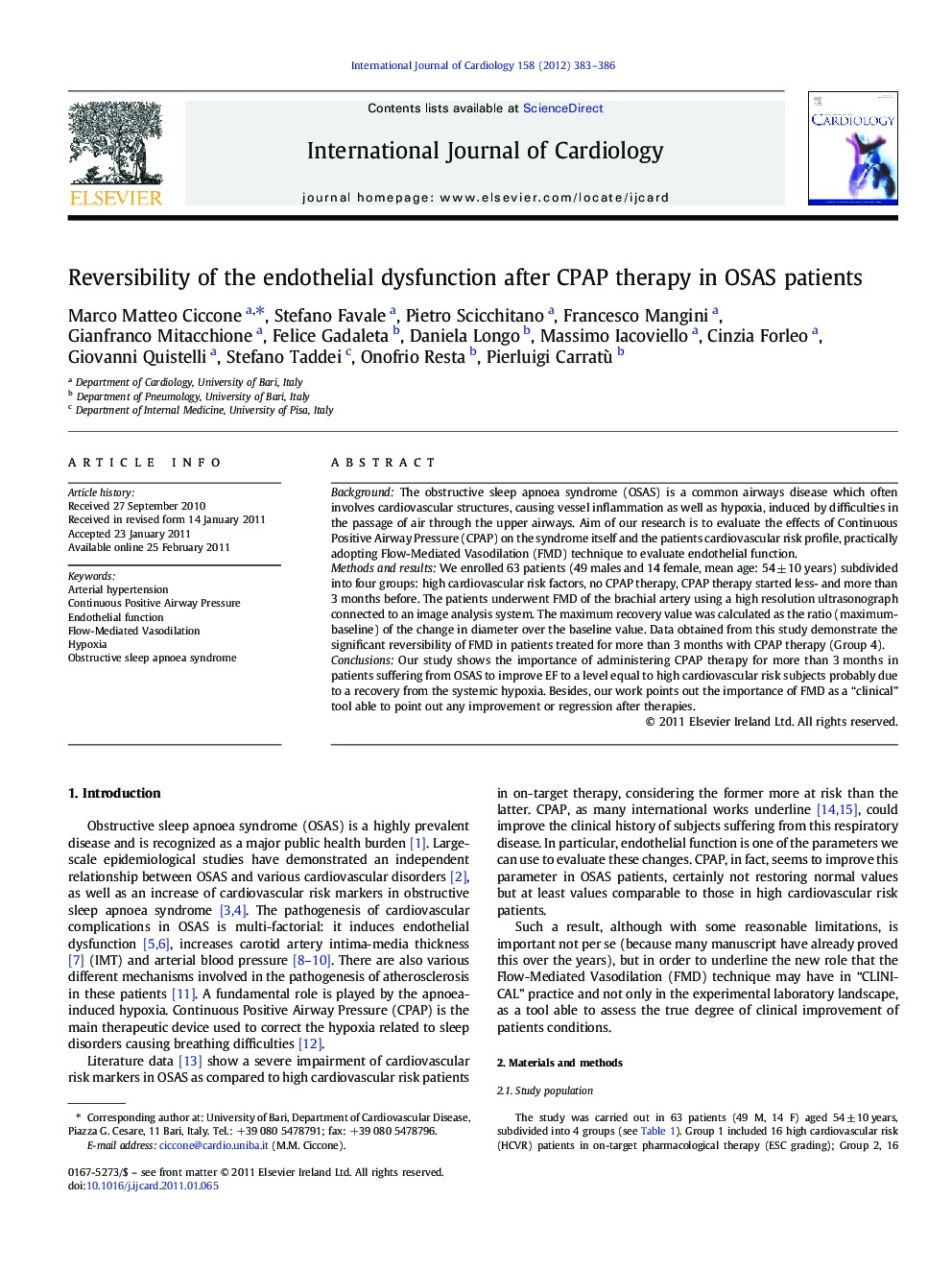| Article ID | Journal | Published Year | Pages | File Type |
|---|---|---|---|---|
| 5977548 | International Journal of Cardiology | 2012 | 4 Pages |
BackgroundThe obstructive sleep apnoea syndrome (OSAS) is a common airways disease which often involves cardiovascular structures, causing vessel inflammation as well as hypoxia, induced by difficulties in the passage of air through the upper airways. Aim of our research is to evaluate the effects of Continuous Positive Airway Pressure (CPAP) on the syndrome itself and the patients cardiovascular risk profile, practically adopting Flow-Mediated Vasodilation (FMD) technique to evaluate endothelial function.Methods and resultsWe enrolled 63 patients (49 males and 14 female, mean age: 54 ± 10 years) subdivided into four groups: high cardiovascular risk factors, no CPAP therapy, CPAP therapy started less- and more than 3 months before. The patients underwent FMD of the brachial artery using a high resolution ultrasonograph connected to an image analysis system. The maximum recovery value was calculated as the ratio (maximum-baseline) of the change in diameter over the baseline value. Data obtained from this study demonstrate the significant reversibility of FMD in patients treated for more than 3 months with CPAP therapy (Group 4).ConclusionsOur study shows the importance of administering CPAP therapy for more than 3 months in patients suffering from OSAS to improve EF to a level equal to high cardiovascular risk subjects probably due to a recovery from the systemic hypoxia. Besides, our work points out the importance of FMD as a “clinical” tool able to point out any improvement or regression after therapies.
